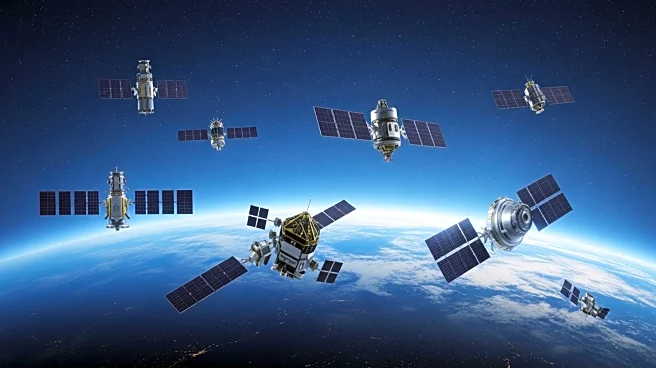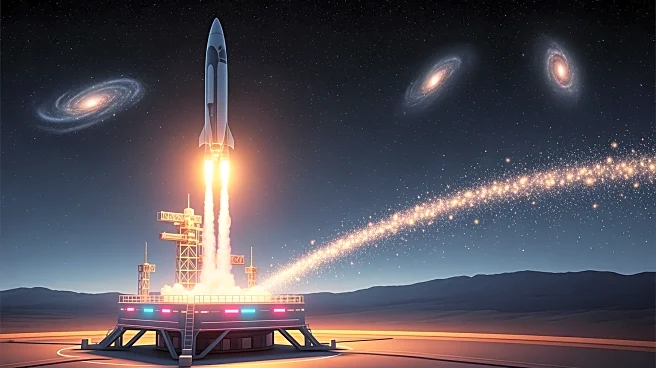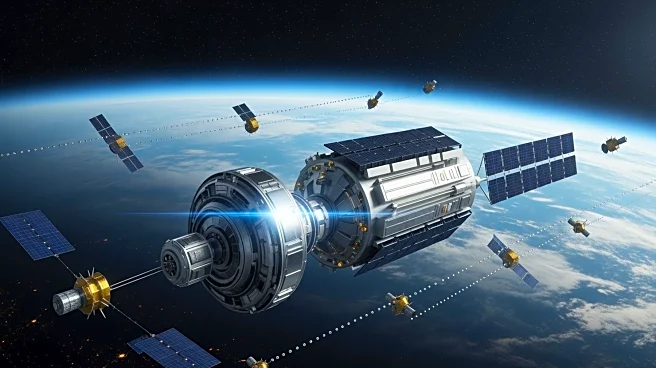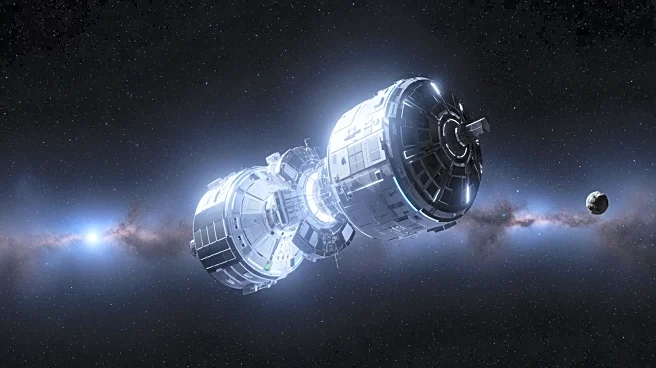What's Happening?
SpaceX successfully launched 29 Starlink satellites into low-Earth orbit from Cape Canaveral Space Force Station in Florida. The launch occurred at 8:24 p.m. and marked the fifth flight for the first-stage
booster used in this mission. SpaceX, founded by Elon Musk, aims to create reusable launch vehicles capable of carrying humans to Mars and other destinations. The company has completed numerous missions, including transporting people to the International Space Station. Starlink, SpaceX's satellite internet constellation, seeks to provide high-speed internet globally, including remote areas. Currently, over 7 million people across 150 countries are connected via Starlink, with plans to increase the number of satellites in orbit to 42,000.
Why It's Important?
The expansion of Starlink satellites is significant as it enhances global internet connectivity, particularly in underserved and remote regions. This development could have profound implications for industries reliant on internet access, such as telecommunications, remote work, and online education. By increasing internet availability, SpaceX's Starlink could bridge digital divides, offering opportunities for economic growth and improved quality of life in areas previously lacking reliable internet service. Additionally, the success of reusable launch vehicles could reduce costs and increase the frequency of space missions, further advancing space exploration and commercial opportunities.
What's Next?
SpaceX plans to continue expanding its Starlink constellation, aiming for a total of 42,000 satellites in orbit. This expansion will likely enhance internet service quality and coverage, potentially attracting more subscribers. As SpaceX progresses, stakeholders such as telecommunications companies, governments, and consumers may respond to the increased competition and improved internet access. Furthermore, SpaceX's advancements in reusable rocket technology could lead to more frequent and cost-effective space missions, potentially accelerating the timeline for human exploration of Mars and other celestial bodies.
Beyond the Headlines
The deployment of Starlink satellites raises ethical and environmental considerations, such as space debris management and the impact on astronomical observations. As the number of satellites increases, the risk of collisions and space debris becomes a concern, necessitating international cooperation and regulation. Additionally, the proliferation of satellites may affect the visibility of the night sky, impacting both professional and amateur astronomy. These issues highlight the need for responsible space management and the development of policies to mitigate potential negative effects.











